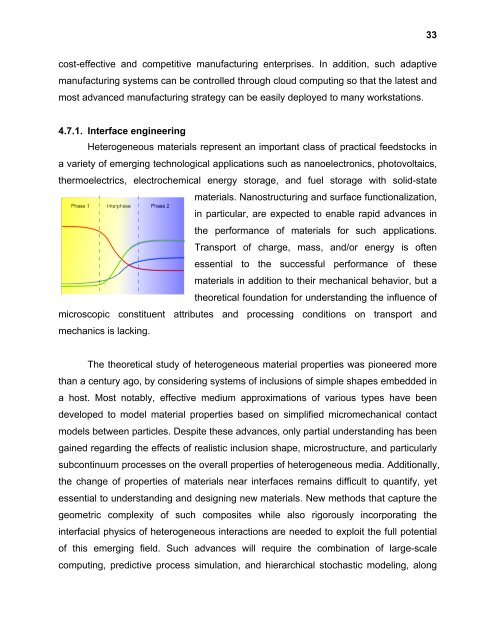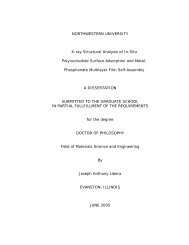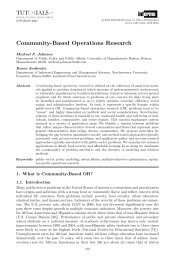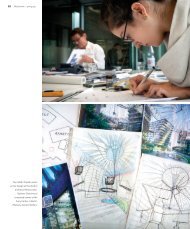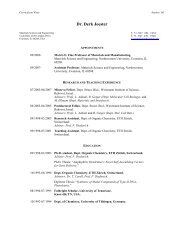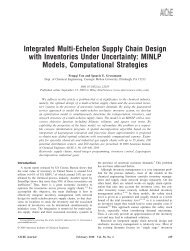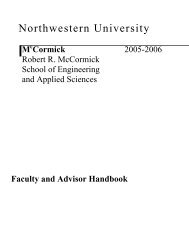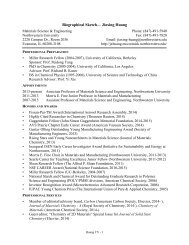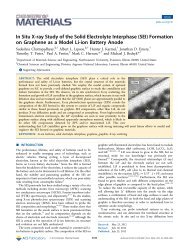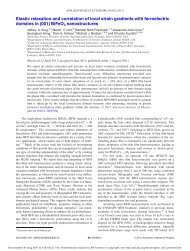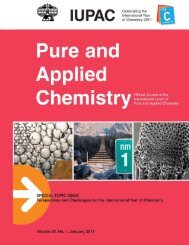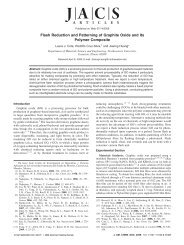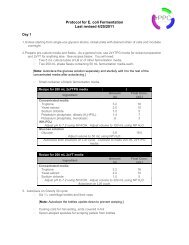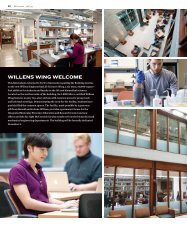Future Directions for Selected Topics in Mechanical and Civil ...
Future Directions for Selected Topics in Mechanical and Civil ...
Future Directions for Selected Topics in Mechanical and Civil ...
You also want an ePaper? Increase the reach of your titles
YUMPU automatically turns print PDFs into web optimized ePapers that Google loves.
33!<br />
cost-effective <strong>and</strong> competitive manufactur<strong>in</strong>g enterprises. In addition, such adaptive<br />
manufactur<strong>in</strong>g systems can be controlled through cloud comput<strong>in</strong>g so that the latest <strong>and</strong><br />
most advanced manufactur<strong>in</strong>g strategy can be easily deployed to many workstations.<br />
4.7.1. Interface eng<strong>in</strong>eer<strong>in</strong>g<br />
Heterogeneous materials represent an important class of practical feedstocks <strong>in</strong><br />
a variety of emerg<strong>in</strong>g technological applications such as nanoelectronics, photovoltaics,<br />
thermoelectrics, electrochemical energy storage, <strong>and</strong> fuel storage with solid-state<br />
materials. Nanostructur<strong>in</strong>g <strong>and</strong> surface functionalization,<br />
<strong>in</strong> particular, are expected to enable rapid advances <strong>in</strong><br />
the per<strong>for</strong>mance of materials <strong>for</strong> such applications.<br />
Transport of charge, mass, <strong>and</strong>/or energy is often<br />
essential to the successful per<strong>for</strong>mance of these<br />
materials <strong>in</strong> addition to their mechanical behavior, but a<br />
theoretical foundation <strong>for</strong> underst<strong>and</strong><strong>in</strong>g the <strong>in</strong>fluence of<br />
microscopic constituent attributes <strong>and</strong> process<strong>in</strong>g conditions on transport <strong>and</strong><br />
mechanics is lack<strong>in</strong>g.<br />
The theoretical study of heterogeneous material properties was pioneered more<br />
than a century ago, by consider<strong>in</strong>g systems of <strong>in</strong>clusions of simple shapes embedded <strong>in</strong><br />
a host. Most notably, effective medium approximations of various types have been<br />
developed to model material properties based on simplified micromechanical contact<br />
models between particles. Despite these advances, only partial underst<strong>and</strong><strong>in</strong>g has been<br />
ga<strong>in</strong>ed regard<strong>in</strong>g the effects of realistic <strong>in</strong>clusion shape, microstructure, <strong>and</strong> particularly<br />
subcont<strong>in</strong>uum processes on the overall properties of heterogeneous media. Additionally,<br />
the change of properties of materials near <strong>in</strong>terfaces rema<strong>in</strong>s difficult to quantify, yet<br />
essential to underst<strong>and</strong><strong>in</strong>g <strong>and</strong> design<strong>in</strong>g new materials. New methods that capture the<br />
geometric complexity of such composites while also rigorously <strong>in</strong>corporat<strong>in</strong>g the<br />
<strong>in</strong>terfacial physics of heterogeneous <strong>in</strong>teractions are needed to exploit the full potential<br />
of this emerg<strong>in</strong>g field. Such advances will require the comb<strong>in</strong>ation of large-scale<br />
comput<strong>in</strong>g, predictive process simulation, <strong>and</strong> hierarchical stochastic model<strong>in</strong>g, along


